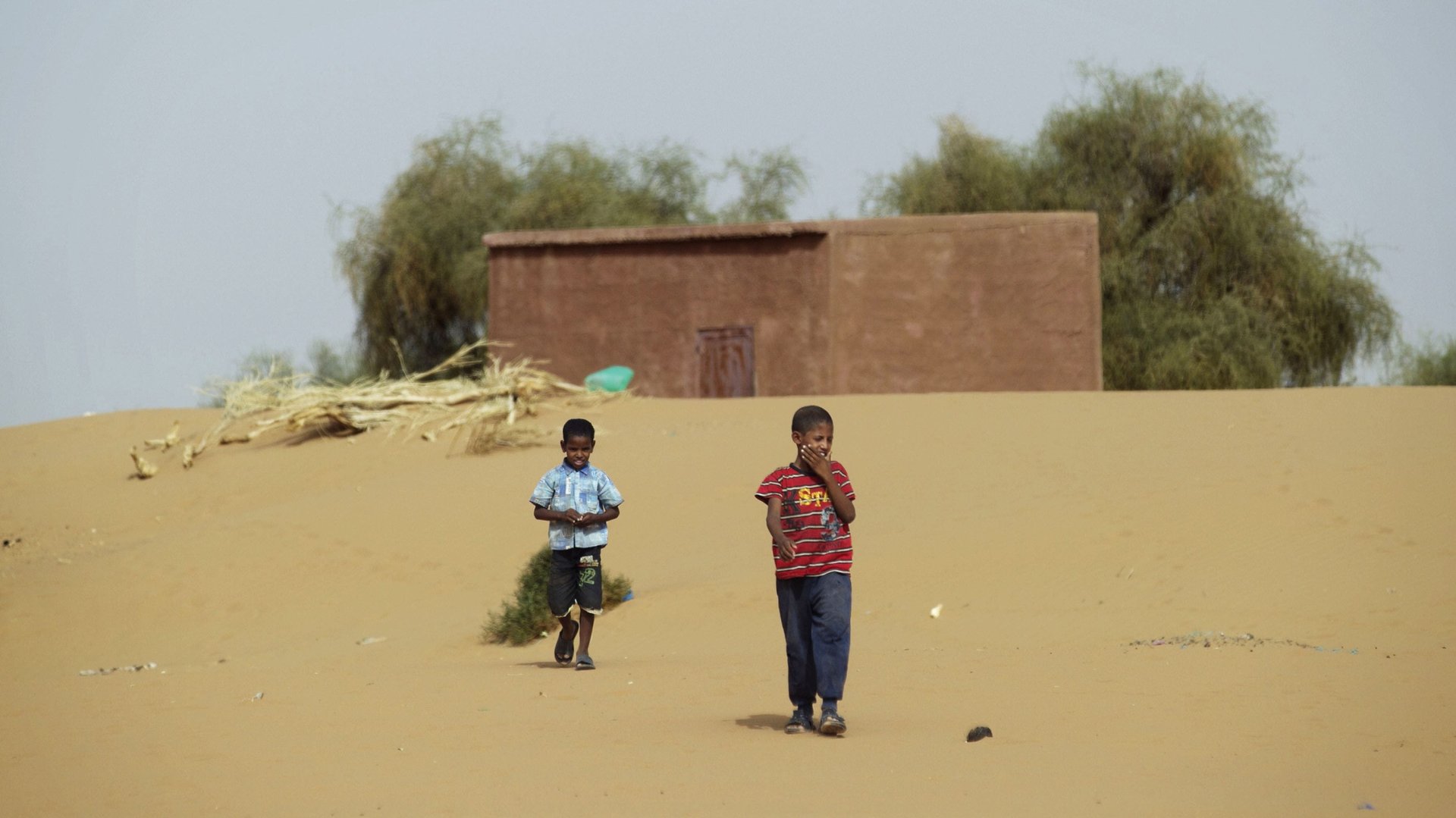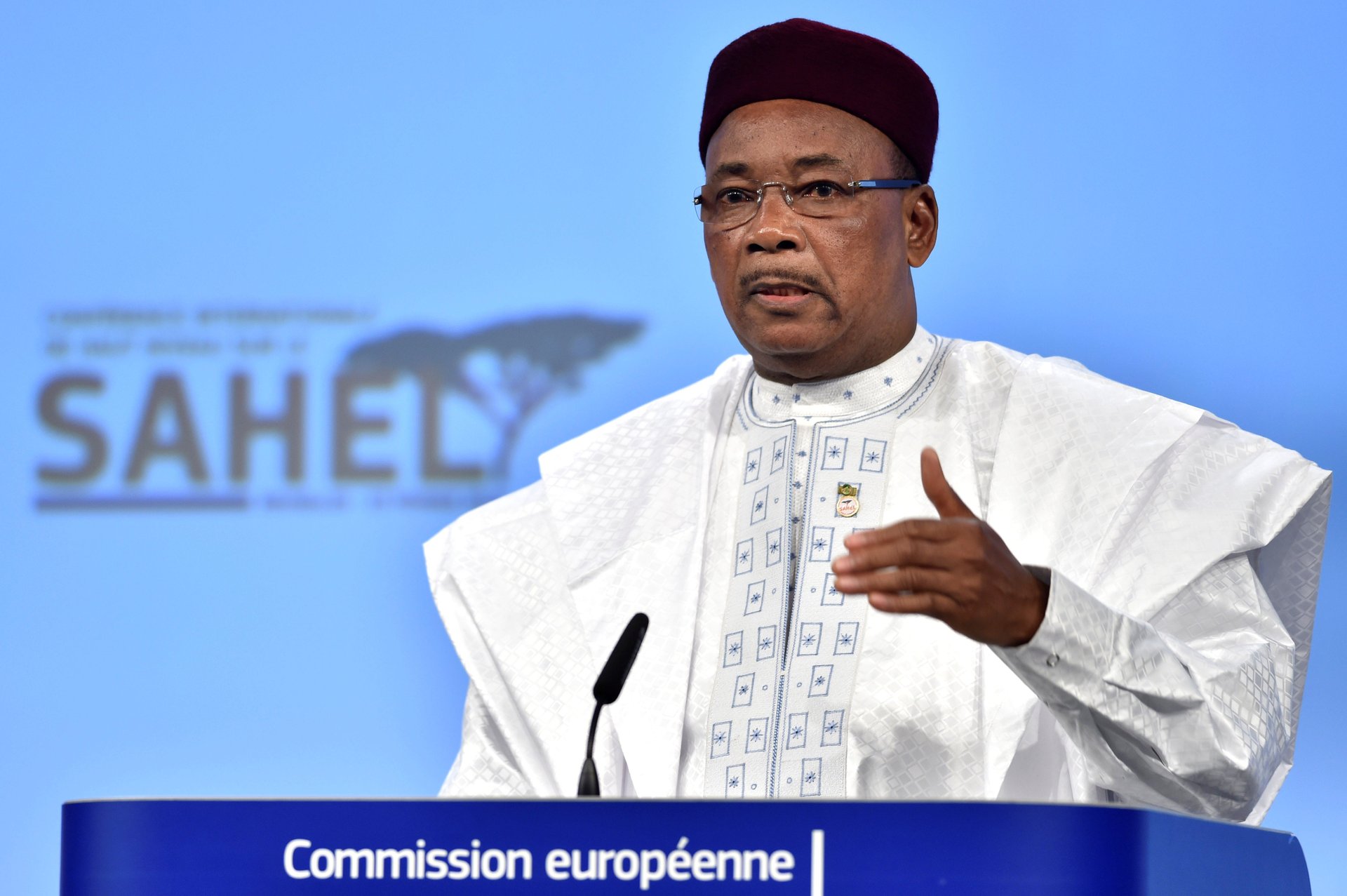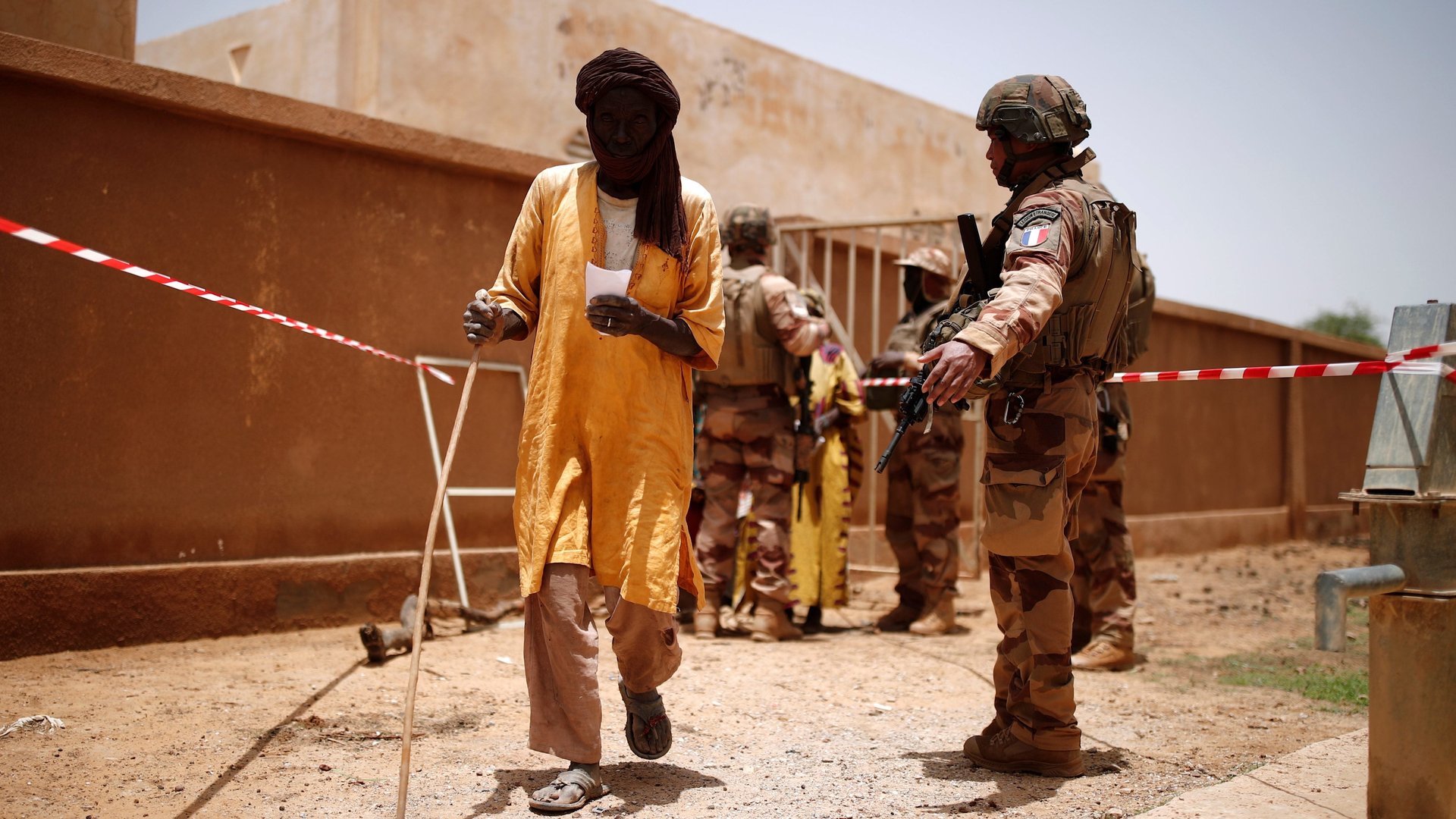West Africa’s Sahel region is especially vulnerable to climate change but also weak governance
While most of the world is vulnerable to climate change, some of the least polluting countries are the most impacted, and least equipped to deal with its outcomes. West Africa’s Sahel region, the arid land just below the Sahara Desert which stretches from Senegal to Chad, emits less than 3% of the greenhouse gases the United States does, but temperatures are rising 1.5 times faster than the global average, according to data from Climate Watch and the UN.


While most of the world is vulnerable to climate change, some of the least polluting countries are the most impacted, and least equipped to deal with its outcomes. West Africa’s Sahel region, the arid land just below the Sahara Desert which stretches from Senegal to Chad, emits less than 3% of the greenhouse gases the United States does, but temperatures are rising 1.5 times faster than the global average, according to data from Climate Watch and the UN.
The Sahel is experiencing extreme temperatures, fluctuating rainfall, and droughts, all of which can degrade land, change grazing patterns, and reduce water supply for both animals and people. This in turn jeopardizes food security, and can have a negative impact on security and migration, Niger’s president Mahamadou Issoufou declared in his opening remarks at the UN General Assembly summit on climate change in the Sahel last Monday.
Adding to the challenge for policy-makers in the Sahel is the question of how to provide opportunities for youngest, fastest-growing populations in the world amid increasing rates of violence, militarization, and loss of state control in parts of Burkina Faso, Mali and northeastern Nigeria. While addressing specific impacts of climate change is important, experts say it is urgent to combine climate-specific approaches with addressing core governance issues that plague the region and stymy efforts to prepare for the highly unpredictable climate of the future decades.
“In Niger, we lose 100,000 hectares of arable land every year…the degradation of our land is unheard of and touches people in rural areas, young people, and many women,” president Issoufou said last month. There are more hot days and nights, and fewer cold ones, and temperatures rise more quickly in areas furthest away from the ocean, according to Dr. Fred Hattermann, researcher at the Potsdam Institute for Climate Impact Research.

Rainy seasons are becoming shorter, more intense, and less predictable as precipitation increases 7% for every degree Celsius in temperature rise, Hatterman says. With farmers losing arable land and access to water fluctuating, food insecurity has become a greater threat, especially for subsistence farmers who do not have economic alternatives if their crops fail. Droughts are a major issue, but so are increasing floods due to more intense rainfall.
The Sahel as a whole is experiencing unprecedented levels of violence and insurgency. In Mali, some of the deadliest massacres of civilian populations in modern history occurred earlier this year in the Mopti region, and a whole new spate of armed groups are wreaking havoc in the center of the country. In Burkina Faso, the most arid northern regions of the country are under siege, with some of them occupied by jihadists who have brought the state to its knees. More than 320,000 students are not in school due to the conflict, which keeps growing in depravity from month to month. In northeastern Nigeria, ISWAP (Islamic State West Africa Province) is back on the front foot.
But as the maxim goes, correlation does not necessarily imply causation.
“An analysis that says that climate change will automatically lead to conflict is incorrect. Climate change is a threat multiplier in a context where the conditions and the drivers for conflict already exist,” explains Nigeria-based independent conflict researcher Chitra Nagarajan. “Whereas people were able to adapt and be resilient, to some extent, to the changing climate, once the conflict factor has been brought in, that makes it so much more difficult,” she says.

Insecurity can dictate which lands are safe enough for farmers to till and for cattle to graze in, while government measures designed to stop insurgents can be hard on local people. In southeastern Niger, for example, a 2017 temporary government ban on the production of red peppers to reduce militant group Boko Haram’s income forced farmers into unstable economic positions.
While climate change can aggravate conflict, “it is important, however, to underscore that perceptions of misrule and broken social contracts remain at the heart of many armed conflicts,” says Judd Devermont, director of the Africa program at the Center for Strategic and International Studies.
Stopping migration from West Africa to Europe is a priority for European governments in the region, and some climate advocates have found that this is one way to garner support for their cause from Western policymakers. “The European donors are all basically mobilizing the aid based on their xenophobia,” said Dr. Jesse Ribot, professor of environmental politics specializing in the Sahel at American University. “So you can say, ‘climate refugees,’ and that makes it so climate change becomes a more appealing issue.” The knock-on effects of climate change on peoples’ economic lives do indeed play a role in migration, but the evidence does not show that people are migrating to Europe from West Africa because of rising temperatures and fluctuations in rainfall.
Economic oppression remains the principal cause of Sahelian people seeking a better life in a different continent. Farmers in the Tambacounda region of eastern Senegal, choose to go to Europe because they are “fleeing from exploitation,” said Dr. Ribot. To address that, “arrangements need to be established in which producers retain a greater portion of the profits that they actually generate.”
Sahelian governments are tackling climate change through a number of large scale initiatives that look to reduce the carbon footprint. The African Development Bank (AfDB) recently announced $1.3 billion in investments for the Sahel Commission investment plan, as well as a $20 million initiative to invest in solar energy, hoping to encourage a rapid transition away from coal. The Great Green Wall initiative to grow trees across the Sahel, restoring “100 million hectares of currently degraded land” and sequestering “250 million tonnes of carbon,” is 15% finished, according to data from the initiative.
In the meantime, temperatures in the Sahel could climb by up to 6℃ (43℉) by the end of the century, according to UN data, with unpredictable and potentially disastrous impacts. Sahelian people—and specifically herders and farmers—have adapted to radically changing environments and economies for decades, from colonialism and post-colonial land uses that have helped bring about the major droughts of the 60s, 70s and 80s, to today’s extreme weather. But the future threats must be dealt with now.
“What’s needed is provision of services and provision of access to livelihoods and job creation opportunities, in a way that is sensitive not just to the changes in climate that we’re seeing, but also future trajectories, as well,” Nagarajan says. Dr. Ribot agrees: “The question really is not within the environment, it’s within what material do they have with which to cope. Do they have alternative income generating opportunities?”
Sign up to the Quartz Africa Weekly Brief here for news and analysis on African business, tech and innovation in your inbox